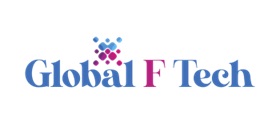In the rapidly evolving world of data analytics, data transformation stands as a foundational pillar that supports accurate insights and actionable intelligence. Especially for businesses and professionals in Thane, where digital integration across industries is booming, understanding how raw data evolves into meaningful insights is crucial. Data transformation is not just a preparatory step—it is the engine that drives efficient and result-oriented analytics workflows. Whether you’re dealing with financial datasets, customer data, or IoT-generated metrics, mastering transformation techniques can significantly elevate your data strategy.
For those looking to upskill in this domain, enrolling in a Data Analytics Course is an excellent way to gain practical exposure to data transformation tools and techniques that are essential in today’s data-driven economy.
What is Data Transformation?
Data transformation is the process of converting raw data into a format that can be effectively analysed. This may involve cleaning, structuring, enriching, or reformatting data to fit specific analytical needs. In Thane’s diverse business environment—ranging from real estate and retail to logistics and education—organisations are increasingly relying on data-driven decision-making. Thus, understanding data transformation is no longer optional but a vital competency.
Why Data Transformation Matters for Analytics Workflows
Raw data is often incomplete, inconsistent, or incompatible with the tools used for analytics. Without proper transformation, such data may lead to misleading insights, flawed predictions, or sub-optimal business decisions. Here’s why data transformation is critical:
- Improves Data Quality: Removing duplicates, correcting inconsistencies, and handling missing values ensures that the dataset is clean and reliable.
- Enhances Compatibility: Data from different sources often comes in varied formats. Transformation standardises this data to make it compatible with analytics tools.
- Boosts Efficiency: Structured and well-formatted data significantly reduces the time and resources required for analysis.
- Facilitates Advanced Analytics: Transformed data enables machine learning, predictive analytics, and real-time reporting to function more effectively.
Key Data Transformation Techniques
Below are some of the most widely used data transformation techniques in analytics workflows:
1. Data Cleaning
Data cleaning is the first and most essential step. It involves:
- Removing or correcting inaccurate records
- Handling missing values using techniques like imputation or deletion
- Standardising formats (e.g., dates, currencies, text capitalisation)
2. Data Normalisation and Scaling
Normalisation ensures that data from different ranges is brought to a standard scale. This is particularly useful for machine learning models and statistical comparisons. Popular methods include:
- Min-Max Scaling
- Z-score Standardization
3. Data Aggregation
Aggregation summarises data to deliver high-level insights. For example:
- Summing monthly sales figures to analyse quarterly performance
- Averaging customer ratings to measure satisfaction levels
4. Data Encoding
Data encoding transforms categorical variables into numerical form, a necessity for most analytics algorithms. Common techniques include:
- One-Hot Encoding
- Label Encoding
5. Data Merging and Joining
Combining multiple datasets is often required for comprehensive analysis. This is achieved through:
- Inner Joins
- Left/Right Joins
- Concatenation
6. Data Filtering and Selection
Not all data is necessary for every analysis. Filtering ensures that only relevant subsets of data are used. For example:
- Selecting customers in Thane with lifetime purchases above ₹10,000
- Filtering sales data for a specific product category
Tools Supporting Data Transformation
Several tools make data transformation accessible and efficient:
- Excel/Google Sheets: Still relevant for light transformation tasks and quick analysis.
- SQL: Ideal for structured data transformation and querying large databases.
- Python (Pandas, NumPy): Offers high flexibility for complex transformation tasks.
- ETL Tools (e.g., Talend, Apache NiFi, Alteryx): Automate end-to-end data transformation pipelines.
- Business Intelligence Tools (Power BI, Tableau Prep): Combine transformation with interactive visualisation.
Taking a Data Analytics Course that emphasises hands-on experience with these tools can significantly enhance your ability to implement transformation strategies effectively.
Real-Life Applications in Thane
Businesses across Thane are already reaping the benefits of effective data transformation:
- Retail Chains: Use transformed customer purchase data to optimise inventory and personalise promotions.
- Real Estate Firms: Analyse transformed demographic data to identify investment hotspots.
- Educational Institutions: Transform attendance and performance data to improve learning outcomes.
- Healthcare Providers: Standardise and analyse patient records to enhance service delivery and compliance.
As more Thane-based companies integrate data-driven strategies, the demand for professionals trained through a Data Analytics Course in Mumbai continues to rise, particularly for those skilled in data transformation.
Best Practices for Effective Data Transformation
To maximise the impact of data transformation in analytics workflows, consider the following best practices:
- Understand Business Objectives: Begin with a clear understanding of what insights are needed and why.
- Maintain Data Lineage: Keep track of data changes to ensure traceability and compliance.
- Automate Where Possible: Use scripts and ETL tools to automate repetitive transformation steps.
- Test and Validate: Always validate the transformed data against sources to maintain integrity.
- Document Processes: Maintain thorough documentation for repeatability and transparency.
Future Trends in Data Transformation
Data transformation is evolving alongside advancements in AI, cloud computing, and edge analytics. In the near future, we can expect:
- AI-Driven Transformation: Smart tools that automatically clean and format data based on past actions.
- Real-Time ETL: Stream-based transformation for dynamic dashboards and real-time alerts.
- Data Fabric Integration: Unified environments where transformation, governance, and access co-exist seamlessly.
These trends signal exciting opportunities for Thane’s professionals to lead digital innovation—especially those equipped with advanced analytics training.
Conclusion
Data transformation is the silent powerhouse of any effective analytics workflow. From improving data quality to enabling predictive modelling, the role of transformation cannot be overstated. In a fast-growing region like Thane, businesses that leverage robust transformation techniques will be better positioned to outsmart competition and innovate faster.
To thrive in such a dynamic ecosystem, enrolling in a Data Analytics Course in Mumbai can provide the skills, tools, and frameworks needed to manage transformation processes with confidence and precision.
Business name: ExcelR- Data Science, Data Analytics, Business Analytics Course Training Mumbai
Address: 304, 3rd Floor, Pratibha Building. Three Petrol pump, Lal Bahadur Shastri Rd, opposite Manas Tower, Pakhdi, Thane West, Thane, Maharashtra 400602
Phone: 09108238354
Email: enquiry@excelr.com











Leave a Reply